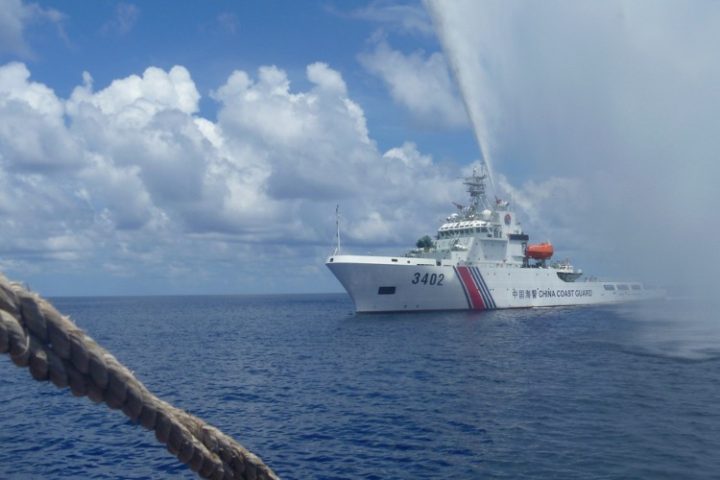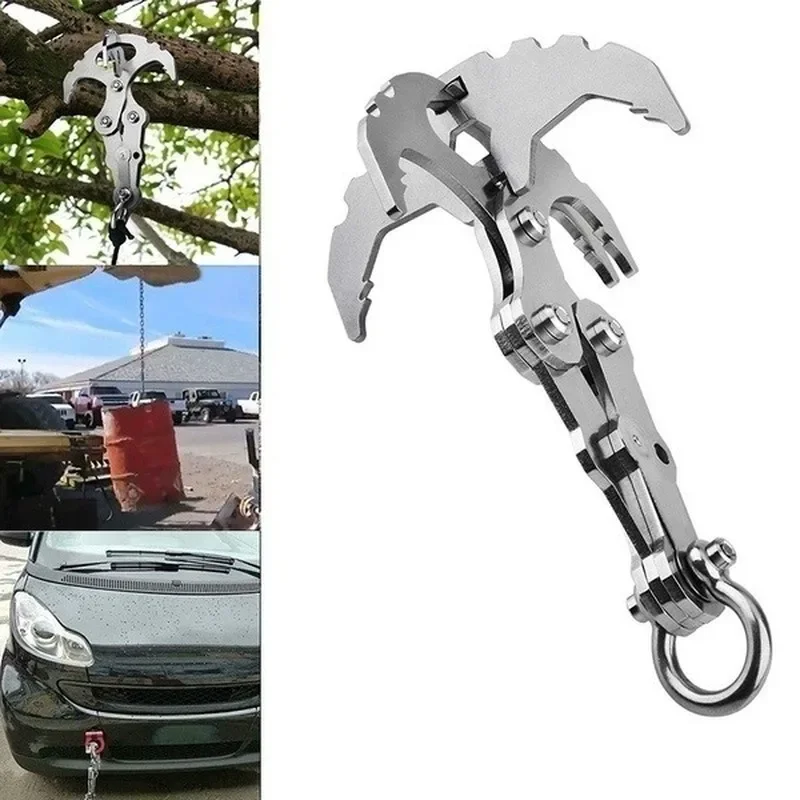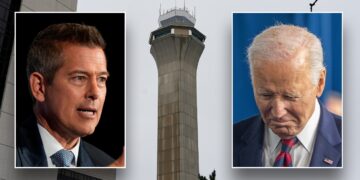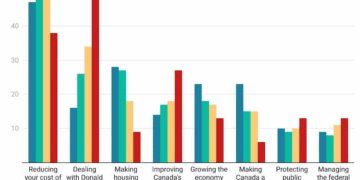
Satellite images of the hotly contested Scarborough Shoal in the South China Sea divulged a new floating barrier across its entrance, near where Philippine ships and Chinese coast guard vessels have had frequent skirmishes.
Scarborough Shoal — a triangular shaped chain of reef and rocks in the disputed South China Sea — has been a flashpoint between the countries since China seized it from the Philippines in 2012.
Since then, Beijing has deployed patrol boats that Manila claims harass Philippine vessels and prevent Filipino fishermen from reaching a lagoon where fish are more abundant.
One of the images taken by Maxar Technologies on February 22 and viewed by Reuters depicted the barrier blocking the mouth of the shoal, where the Chinese Coast Guard last week claimed to have fended off a Philippine vessel “illegally intruding” into Beijing’s waters.
The Philippines, which last week mobilized a Bureau of Fisheries and Aquatic Resources (BFAR) vessel to patrol the shoal and transport fuel to Filipino fishermen in the area, said that China’s claims were “inaccurate” and that Manila’s activities there were legal.
China claims the Scarborough Shoal as its own, although it is inside the Philippines’ 200-nautical-mile exclusive economic zone.
An international arbitration tribunal in The Hague ruled in 2016 that China’s claims had no legal basis — a decision Beijing has dismissed.
Hence, the atoll has become one of Asia’s most disputed maritime features and a flashpoint for diplomatic clashes over sovereignty and fishing rights.
The satellite image reinforces a report and video distributed by the Philippine Coast Guard (PCG) on February 25 depicting two Chinese Coast Guard inflatable boats deploying floating barriers at the shoal’s entrance on February 22.
The PCG said that a Chinese Coast Guard ship shadowed the BFAR vessel, “conducted blocking maneuvers” about 1.3 nautical miles (2.4km) off the shoal, and approached it.
“We can assume that (the barrier) is intended for Philippine government vessels because they install it every time they monitor our presence within the BDM vicinity,” Commodore Jay Tarriela, a spokesman at the Philippine Coast Guard, said, referring to Bajo de Masinloc, Manila’s name for the shoal.
Chinese Foreign Ministry spokeswoman Mao Ning said Huangyan Dao, China’s name for the shoal, is “China’s inherent territory.”
“Recently, the Philippine side has taken a series of actions to violate China’s sovereignty” in the shoal’s waters, she said. “China has to take necessary measures to firmly safeguard its territorial sovereignty and maritime rights and interests.”
Another satellite image showed what Maxar portrayed as “possible Chinese interception of a BFAR vessel” at Scarborough Shoal.
China claims almost the entire South China Sea, a passage for more than $3 trillion in annual shipping commerce. Its territorial claims clash with those of the Philippines, Vietnam, Malaysia, and Brunei.
“What we are seeing at the Scarborough Shoal now is likely the beginning of Beijing’s pushback against Manila’s pushback,” said Dr. Ian Storey, a senior fellow at Singapore’s ISEAS-Yusof Ishak Institute.
Since President Ferdinand Marcos, Jr. assumed power in June 2022, the Philippines has contested China’s presence at Scarborough and its attempts to halt the resupply of Filipino troops based at Second Thomas Shoal, he said.
“China’s attempts to prevent Filipino fishermen from fishing at Scarborough Shoal is absolutely illegal,” Dr. Storey said.
“The 2016 arbitral tribunal ruling gave fishermen from both countries the right to (fish there). Manila is merely supporting the legitimate rights of Filipino fishermen.”
The shoal is desirable due to its bountiful fish stocks and a stunning turquoise lagoon that provides a safe haven for vessels during storms.
The Chinese removed the barrier a few hours after the BFAR vessel left, Commodore Tarriela said. It was not clear from the photos how strong the barrier was and whether it would have posed an obstacle to larger warships.
In an article on February 25, Chinese state-media outlet Global Times said “the Philippines has abused and unilaterally sabotaged the foundation of Beijing’s goodwill to Manila” that permit Philippine fishermen to operate nearby, by working against China’s sovereignty and jurisdiction.
“If such provocations persist, China could be forced to take more effective measures to control the situation,” the article said, citing specialists.
The Philippines on February 17 also slammed Chinese coast guard ships for “dangerous” maneuvers after they repeatedly banned a Philippine vessel delivering supplies to fishermen at a reef off the Southeast Asian nation’s coast.
The incidents happened near the Scarborough Shoal on February 15 and 16, several days after the Philippine Coast Guard made similar allegations against Chinese boats in the same area.
Furthermore, the Philippines armed forces will ensure the “unimpeded and peaceful” exploration and exploitation of natural resources within the country’s exclusive economic zone (EEZ) as it shifts its focus to external defense, Manila’s defense secretary said on January 23.
“We are evolving into a defense concept that projects our power into areas where we must, by constitutional fiat and duty, protect and preserve our resources,” Defense Secretary Gilberto Teodoro told the Manila Overseas Press Club.
Teodoro also said the Philippines will “increase the tempo” of activities with allies and major partners in the West Philippines Sea and other parts of the country and “exercise these partnerships to the full.”
“We are not the ones encroaching on the EEZ of another country sea. The encroacher has a vast area of sea,” Teodoro said.
“We do not want a fight, we want peace, but it should be based on international law and sustainability,” he added.
“We will not bend over backward.”
On January 17, the Southeast Asian nation’s top defense official said also that the Philippines is planning “more robust” military activities with the United States and its allies in the face of a “more aggressive” China.
“The alliance with the US is extremely strong,” Teodoro said in an interview with Bloomberg News in his office in Manila. “We would like to build up our capabilities in order for us to be a more effective contributor to regional stability.”
The Philippines is building on a stronger partnership with the United States under the administration of Ferdinand Marcos, Jr. to expand ties with “other allies and like-minded countries,” including Australia, Japan, the U.K., and Canada, amid the threat of China’s “domination” in the South China Sea.
Shop For Night Vision | See more…
Shop For Survival Gear | See more…
-
Sale!

Stainless Steel Survival Climbing Claw Carabiner Multitool Folding Grappling Hook
Original price was: $19.99.$9.99Current price is: $9.99. Add to cart -
Sale!

Tactical Camo Nylon Body Armor Hunting Vest With Pouch
Original price was: $49.99.$39.99Current price is: $39.99. Select options This product has multiple variants. The options may be chosen on the product page -
Sale!

Mesh Shooting Hunting Vest with Multi Pockets
Original price was: $59.99.$39.99Current price is: $39.99. Add to cart

































 Reaction & Commentary
Reaction & Commentary












